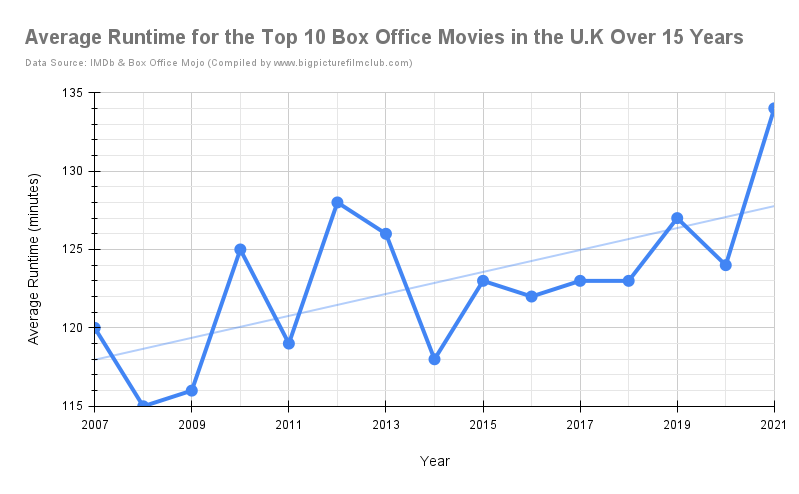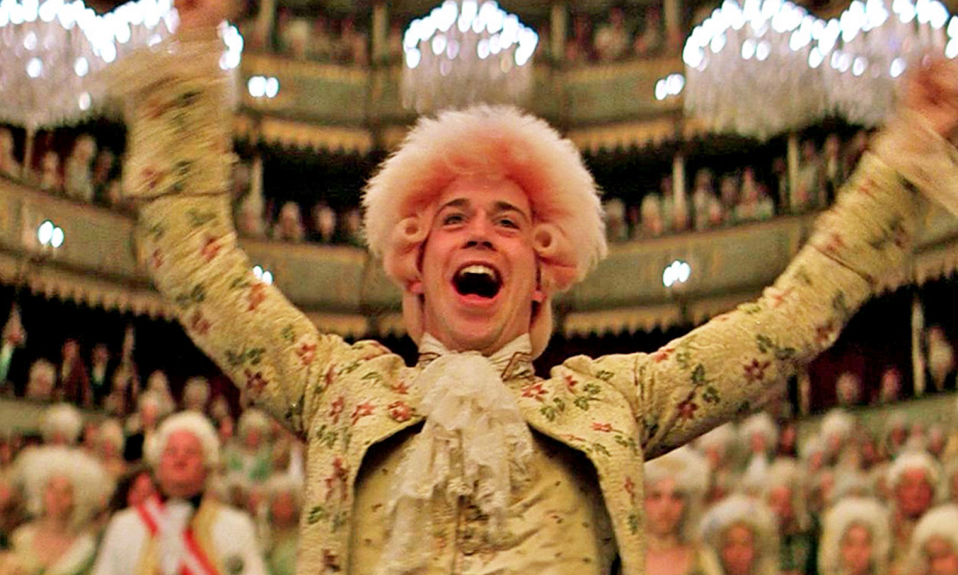Are film runtimes becoming longer? Many have joked that the internet and mobile phones have caused our attention spans to deteriorate. But is this true when it comes to our cinema viewing habits?
Today we will investigate how the average runtime of popular films has changed over the past 15 years. As well as what the data suggests about the current media landscape. To do this we used the Box Office Mojo UK Box Office Top 10 figures from 2007 onwards and film runtimes provided by IMDb.
UK Box Office Top 10 Average Runtimes
One clear trend the data reveals is that the average runtime for UK box office top 10 films has increased between 2007 and 2021. The average runtime of a top 10 movie in 2007 was 120 minutes. Fast-forward to 2021 and the average runtime is around 134 minutes. The highest point in 15 years.
A surprising find was that half or over half the movies in many of the top 10s ran 2 hours or longer. 2008 and 2011 were the only outliers. This appears to buck the assumption that audiences prefer shorter movies and that shorter movies are more successful overall.
In fact, since 2007, no more than 4 movies in each yearly top 10 had a runtime of 100 minutes or less. The highest number of movies with runtimes of 100 minutes or lower was 2009.

We Only Have 100 Minutes
Of the successful movies that ran 100 minutes or shorter a vast majority (over 78%) were rated U or PG. Many are also animated movies (over 69%). This suggests that the shorter movies that generally earn the most are movies accessible to either everyone or family audiences. As animation is generally seen as a medium for children’s stories, which are perfect for family viewing, it is no wonder these results emerged. And with younger viewers having lower attention spans these movies being shorter is understandable.
Conversely, over 80% of the films that ran 120 minutes or longer were rated 12a. With the vast majority being action films of some kind e.g. pure action, sci-fi action, fantasy action, etc. This means the longer films that perform best are aimed primarily at teen audiences. This is understandable as teens spend the most time at the cinema. They are also more likely to be influenced by the advertising of tentpole action films. And because teens will have a more developed attention span a 2-hour runtime or longer may not be seen as a hindrance.
Epic Runtimes In the Age of Binging
So why are long runtimes not a barrier to popular films like they used to appear? This could be attributed to two primary factors. Firstly, previous successes have encouraged this development. For example, 2009’s Avatar, a sci-fi action blockbuster, had a 162-minute runtime. It also became the highest-grossing film ever at that time (not adjusting for inflation). This showed that long genre-inflected movies could still succeed.
But the most likely reason for this change is the rise of streaming services. Companies like Netflix have provided both competition and opportunities for cinemas. Most notably with the practice of releasing full series all at once to encourage binge-watching having proved quite successful since its implementation, it’s easy to see how an extended runtime would no longer present a problem for a film’s box office. Companies just have to focus on reaching the right audience. And with a bigger audiovisual experience on offer, it’s easy to see why visually intensive stories like action films (and their various subgenres) would attract audiences to the cinema.
Also Read: Time To Rethink The Box Office Film Charts?













